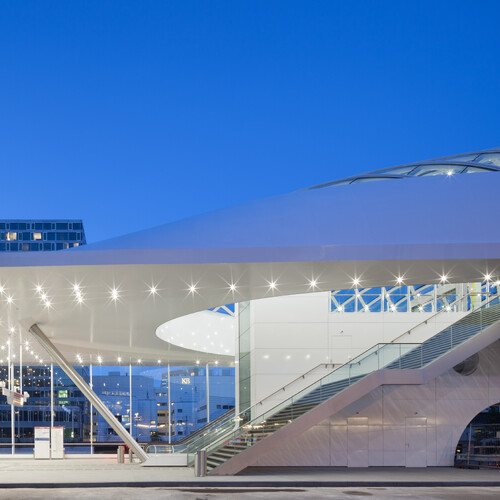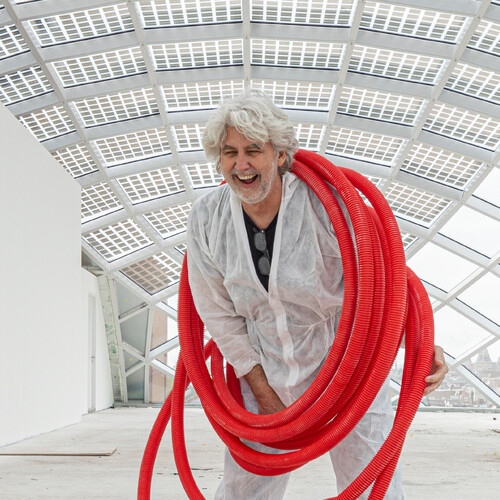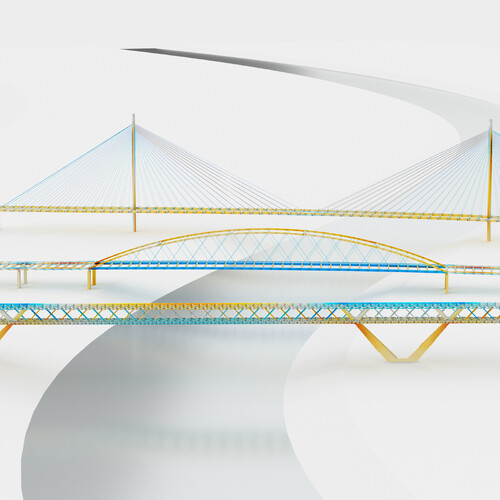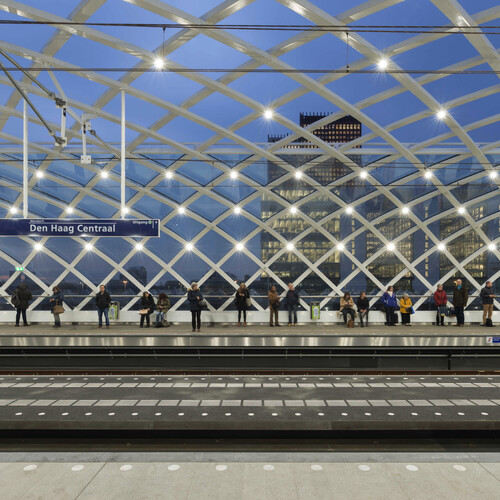18.10.2019
The lightrailstation The Hague, a design by ZJA, has won the prestigious European Steel Design Merit Award 2019. The award is presented every two years by the European Convention for Constructional Steelwork (ECCS) to projects where steel has been applied in an inspiring way. The lightrailstation is characterized by a slender roof of glass and steel above the platforms. A covered walkway in the form of an expressive steel canopy forms the connection between the lightrailstation and the main hall of The Hague Central station.
Recognizability and comfort
The lightrailstation canopy and viaduct sculps itself into a sharp contour as it approaches the train station, and cuts through the glass entrance façade, penetrating into the main station hall. This extension inside the hall provides legibility to the access route between the two stations and makes wayfinding easy, therefor directing passengers in a recognizable and comfortable way. In the urban context, the transparent and vaulted grid of the roof functions as an inviting gesture. The flowing shape of the roof offers shelter from rain and wind and allows plentiful entry of daylight. In the evening, a starry sky of LED lights illuminates the platforms and the covered approach to the lightrailstation.
ZJA is extremely proud that the lightrailstation has been awarded a European Steel Design Merit Award 2019. It is the appreciation for a special project that has come about in a long and complex process involving many companies.
Unique architectural identity
The architectonic idiom of the lightrailstation is related to that of the station and viaduct of the Beatrixlaan in The Hague for which ZJA made the design in the past. Thus, both stations belong to one architectural family lending recognizability to the lightrail route. The lightrailstation has a strong identity of its own compared to The Hague Central Station and its surroundings. The sculptural form of the roof and canopy are a real eye-catcher, but also take the human scale well into account. At the same time, the lightrailstation also blends seamlessly into its extremely complex urban environment.
Parametric design
The design of the spatial roof is developed and optimized using parametric and computational design methods. This made it possible to use rectangular shaped, single curved, cold-bent layered glass. In addition to the advantage of using cold-bent glass, the quantity of materials used in the steel structure could be drastically reduced. Moreover, the form is not arbitrary but is generated and controlled based on the structural lines of force. The very slim structure of the roof is lightweight and has yielded a saving on materials and production (energy) compared to a traditional roof.
Renewed entrance to the city of The Hague
With the design of the slender lightrailstation, the city of The Hague has been given a recognizable and iconic station that stands out in the urban context. With the new lightrailstation, the former back of The Hague Central station has been transformed into an attractive entrance to the city of The Hague that welcomes travellers. Moreover, it is a well-arranged station where travellers can easily find their way.
The construction of the lightrailstation was managed by ProRail, commissioned by the municipality of The Hague, with contractor BAM Infra NL building the new station.
Structural Engineers: BAM Infraconsult, Knippers Helbig Advanced Engineering, Royal HaskoningDHV, Ney & Partners. Building contractor: BAM Infra NL. Subcontractor bridge structure: Smulders. Subcontractor roof structure: Jos van den Bersselaar constructie, Kersten Europe
Subcontractor glass: Brakel Atmos.
Photos: Bart van Hoek and Raoul Suermondt



